BMW iX3 vs BYD Seal U – Which car suits you better?
Two cars, one duel: BMW iX3 meets BYD Seal U.
Which one wins in performance, efficiency and value for money? Find out now!
Costs and Efficiency:
Price and efficiency are key factors when choosing a car – and this is often where the real differences emerge.
BYD Seal U has a convincingly advantage in terms of price – it starts at 34300 £, while the BMW iX3 costs 59100 £. That’s a price difference of around 24780 £.
In terms of energy consumption, the advantage goes to the BMW iX3: with 15.10 kWh per 100 km, it’s clearly perceptible more efficient than the BYD Seal U with 19.90 kWh. That’s a difference of about 4.80 kWh.
As for range, the BMW iX3 performs noticeable better – achieving up to 805 km, about 305 km more than the BYD Seal U.
Engine and Performance:
Power, torque and acceleration are the classic benchmarks for car enthusiasts – and here, some clear differences start to show.
When it comes to engine power, the BMW iX3 has a distinct edge – offering 469 HP compared to 324 HP. That’s roughly 145 HP more horsepower.
In acceleration from 0 to 100 km/h, the BMW iX3 is noticeable quicker – completing the sprint in 4.90 s, while the BYD Seal U takes 5.90 s. That’s about 1 s faster.
In terms of top speed, the BMW iX3 performs slightly better – reaching 210 km/h, while the BYD Seal U tops out at 180 km/h. The difference is around 30 km/h.
There’s also a difference in torque: BMW iX3 pulls slightly stronger with 645 Nm compared to 550 Nm. That’s about 95 Nm difference.
Space and Everyday Use:
Cabin size, boot volume and payload all play a role in everyday practicality. Here, comfort and flexibility make the difference.
Both vehicles offer seating for 5 people.
In curb weight, BYD Seal U is distinct lighter – 1940 kg compared to 2360 kg. The difference is around 420 kg.
In terms of boot space, the BYD Seal U offers minimal more room – 552 L compared to 520 L. That’s a difference of about 32 L.
In maximum load capacity, the BMW iX3 performs somewhat better – up to 1750 L, which is about 285 L more than the BYD Seal U.
When it comes to payload, BMW iX3 somewhat takes the win – 465 kg compared to 410 kg. That’s a difference of about 55 kg.
Who wins the race?
The BMW iX3 proves to be outperforms in nearly all aspects and therefore becomes our DriveDuel Champion!
BMW iX3 is the better all-rounder in this comparison.
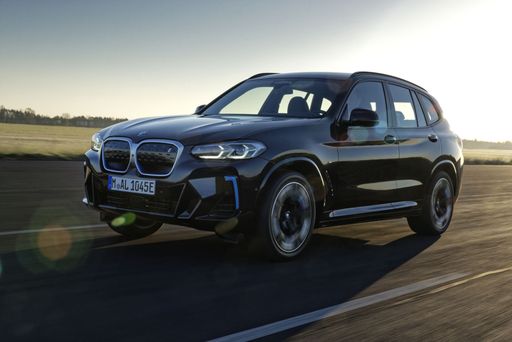
BMW iX3
BMW iX3
The BMW iX3 is an all-electric SUV that combines elegant design with sustainable technology, showcasing the brand's commitment to a greener future. Its refined interior offers a high level of comfort and advanced connectivity features, making it an attractive option for tech-savvy drivers. With its dynamic performance, the iX3 provides an engaging driving experience, proving that environmentally conscious solutions don't have to compromise on driving pleasure.
details @ press.bmwgroup.com
@ press.bmwgroup.com
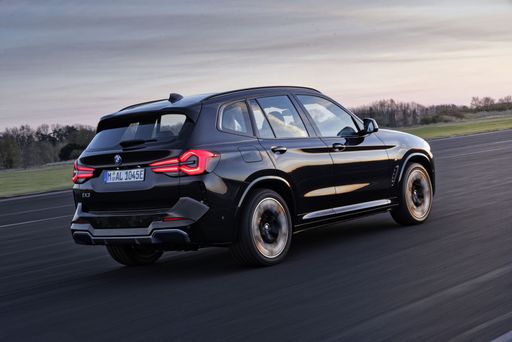 @ press.bmwgroup.com
@ press.bmwgroup.com
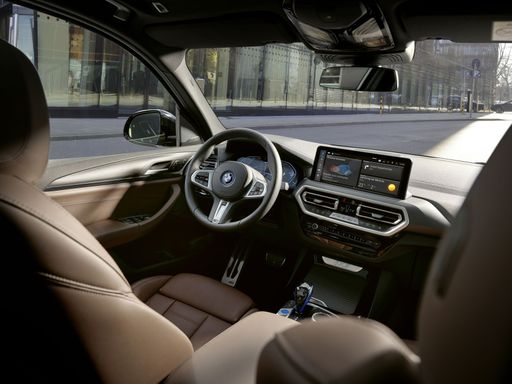 @ press.bmwgroup.com
@ press.bmwgroup.com
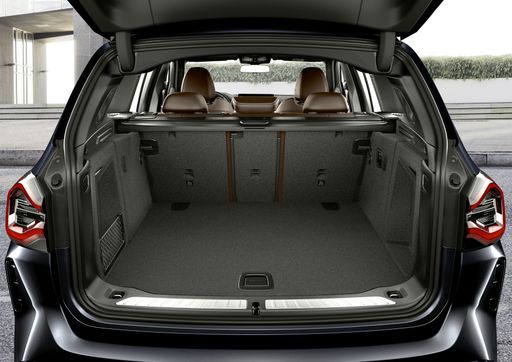 @ press.bmwgroup.com
@ press.bmwgroup.com
BYD Seal U
The BYD Seal U presents itself as a sophisticated addition to the electric vehicle market, blending sleek design with cutting-edge technology. Its modern aesthetic is complemented by a spacious interior, offering both comfort and functionality for drivers and passengers alike. With advanced features prioritising sustainability and performance, it represents a bold step forward in eco-friendly motoring.
details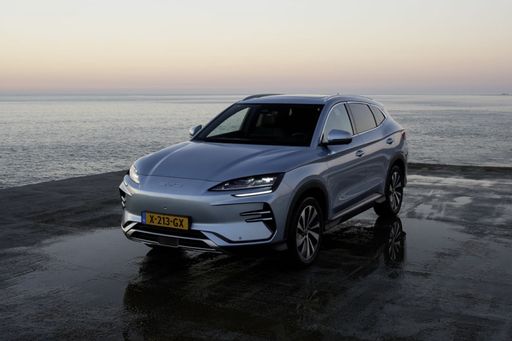 @ press.bydauto.be
@ press.bydauto.be
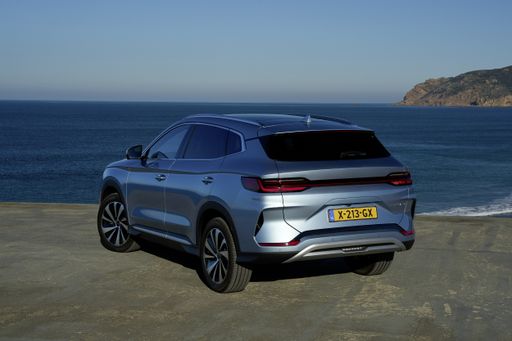 @ press.bydauto.be
@ press.bydauto.be
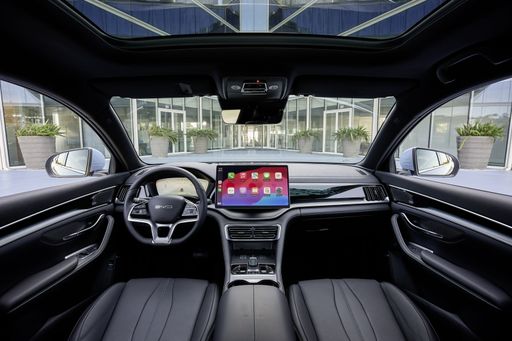 @ press.bydauto.be
@ press.bydauto.be

|

|
|
|
|
Costs and Consumption |
|
|---|---|
|
Price
59100 - 64600 £
|
Price
34300 - 39800 £
|
|
Consumption L/100km
-
|
Consumption L/100km
0.4 - 1.2 L
|
|
Consumption kWh/100km
15.10 kWh
|
Consumption kWh/100km
19.9 - 20.5 kWh
|
|
Electric Range
805 km
|
Electric Range
70 - 500 km
|
|
Battery Capacity
108.70 kWh
|
Battery Capacity
-
|
|
co2
0 g/km
|
co2
0 - 26 g/km
|
|
Fuel tank capacity
-
|
Fuel tank capacity
60 L
|
Dimensions and Body |
|
|---|---|
|
Body Type
SUV
|
Body Type
SUV
|
|
Seats
5
|
Seats
5
|
|
Doors
5
|
Doors
5
|
|
Curb weight
2360 kg
|
Curb weight
1940 - 2147 kg
|
|
Trunk capacity
520 L
|
Trunk capacity
425 - 552 L
|
|
Length
4782 mm
|
Length
4775 - 4785 mm
|
|
Width
1895 mm
|
Width
1890 mm
|
|
Height
1635 mm
|
Height
1668 - 1670 mm
|
|
Max trunk capacity
1750 L
|
Max trunk capacity
1440 - 1465 L
|
|
Payload
465 kg
|
Payload
410 kg
|
Engine and Performance |
|
|---|---|
|
Engine Type
Electric
|
Engine Type
Plugin Hybrid, Electric
|
|
Transmission
Automatic
|
Transmission
Automatic
|
|
Transmission Detail
Reduction Gearbox
|
Transmission Detail
CVT, Reduction Gearbox
|
|
Drive Type
All-Wheel Drive
|
Drive Type
Front-Wheel Drive, All-Wheel Drive
|
|
Power HP
469 HP
|
Power HP
218 - 324 HP
|
|
Acceleration 0-100km/h
4.90 s
|
Acceleration 0-100km/h
5.9 - 9.6 s
|
|
Max Speed
210 km/h
|
Max Speed
170 - 180 km/h
|
|
Torque
645 Nm
|
Torque
300 - 550 Nm
|
|
Number of Cylinders
-
|
Number of Cylinders
4
|
|
Power kW
345 kW
|
Power kW
160 - 238 kW
|
|
Engine capacity
-
|
Engine capacity
1497 - 1498 cm3
|
General |
|
|---|---|
|
Model Year
2026
|
Model Year
2024
|
|
CO2 Efficiency Class
A
|
CO2 Efficiency Class
B, A
|
|
Brand
BMW
|
Brand
BYD
|
What drive types are available for the BMW iX3?
The BMW iX3 is available as All-Wheel Drive.
The prices and data displayed are estimates based on German list prices and may vary by country. This information is not legally binding.
